*NURSING > EXAM > NURS-6501N Week 1,Advanced Pathophysiology_ WALDEN UNIVERSITY: QUESTION AND ANSWERS RATED A (All)
NURS-6501N Week 1,Advanced Pathophysiology_ WALDEN UNIVERSITY: QUESTION AND ANSWERS RATED A
Document Content and Description Below
Course NURS-6501N-12,Advanced Pathophysiology.2018 Fall Quarter 08/27-11/19-PT27 Test Quiz - Week 1 Started 8/31/19 12:23 AM Submitted 8/31/19 12:59 AM Due Date 9/3/19 1:59 AM Status Completed A... ttempt Score 23 out of 25 points Time Elapsed 35 minutes out of 45 minutes Instructions Please answer each question below and click Submit when you have completed the Quiz. Results Displayed Submitted Answers, Correct Answers, Feedback • Question 1 1 out of 1 points A patient wants to know the risk factors for Down syndrome. What is the nurse’s best response? • Question 2 1 out of 1 points The student is reviewing functions of the cell. The student would be correct in identifying the primary function of the nerve cell as: • Question 3 1 out of 1 points A nurse is discussing the movement of fluid across the arterial end of capillary membranes into the interstitial fluid surrounding the capillary. Which process of fluid movement is the nurse describing? • Question 4 0 out of 1 points The nurse is teaching staff about the most common cause of Down syndrome. What is the nurse describing? • Question 5 0 out of 1 points A patient has a heart attack that leads to progressive cell injury that causes cell death with severe cell swelling and breakdown of organelles. What term would the nurse use to define this process? • Question 6 1 out of 1 points How are potassium and sodium transported across plasma membranes? • Question 7 1 out of 1 points In teaching a patient with cirrhosis, which information should the nurse include regarding cholesterol? • Question 8 1 out of 1 points The ion transporter that moves Na+ and Ca2+ simultaneously in the same direction is an example of which of the following types of transport? • Question 9 1 out of 1 points A runner has depleted all the oxygen available for muscle energy. Which of the following will facilitate his continued muscle performance? • Question 10 1 out of 1 points A 12-year-old male is diagnosed with Klinefelter syndrome. His karyotype would reveal which of the following? • Question 11 1 out of 1 points When a patient asks what causes cystic fibrosis, how should the nurse respond? Cystic fibrosis is caused by an _____ gene. • Question 12 1 out of 1 points After a geneticist talks to the patient about being a chromosomal mosaic, the patient asks the nurse what that means. How should the nurse respond? You may _____ genetic disease(s). • Question 13 1 out of 1 points A 20-year-old pregnant female gives birth to a stillborn child. Autopsy reveals that the fetus has 92 chromosomes. What term may be on the autopsy report to describe this condition? • Question 14 1 out of 1 points What principle should the nurse remember when trying to distinguish aging from diseases? • Question 15 1 out of 1 points A newborn male is diagnosed with albinism based on skin, eye, and hair appearance. Which finding will support this diagnosis? • Question 16 1 out of 1 points A 50-year-old male was recently diagnosed with Huntington disease. Transmission of this disease is associated with: • Question 17 1 out of 1 points A group of prison inmates developed tuberculosis following exposure to an infected inmate. On examination, tissues were soft and granular (like clumped cheese). Which of the following is the most likely cause? • Question 18 1 out of 1 points Which of the following mutations have the most significant effect on protein synthesis? • Question 19 1 out of 1 points A nurse is reading a chart and sees the term oncotic pressure. The nurse recalls that oncotic pressure (colloid osmotic pressure) is determined by: • Question 20 1 out of 1 points A nurse is reviewing the pedigree chart. When checking for a proband, what is the nurse looking for? • Question 21 1 out of 1 points An aide asks the nurse why people who have neurofibromatosis will show varying degrees of the disease. Which genetic principle should the nurse explain to the aide? • Question 22 1 out of 1 points A eukaryotic cell is undergoing DNA replication. In which region of the cell would most of the genetic information be contained? • Question 23 1 out of 1 points The early dilation (swelling) of the cell’s endoplasmic reticulum results in: • Question 24 1 out of 1 points During childhood, the thymus decreases in size, and this is referred to as _____ atrophy. • Question 25 1 out of 1 points A nurse is teaching a patient with diabetes how glucose is transported from the blood to the cell. What type of transport system should the nurse discuss with the patient? • Question 26 0 out of 0 points When completing this quiz, did you comply with Walden University’s Code of Conduct including the expectations for academic integrity? [Show More]
Last updated: 1 year ago
Preview 1 out of 10 pages
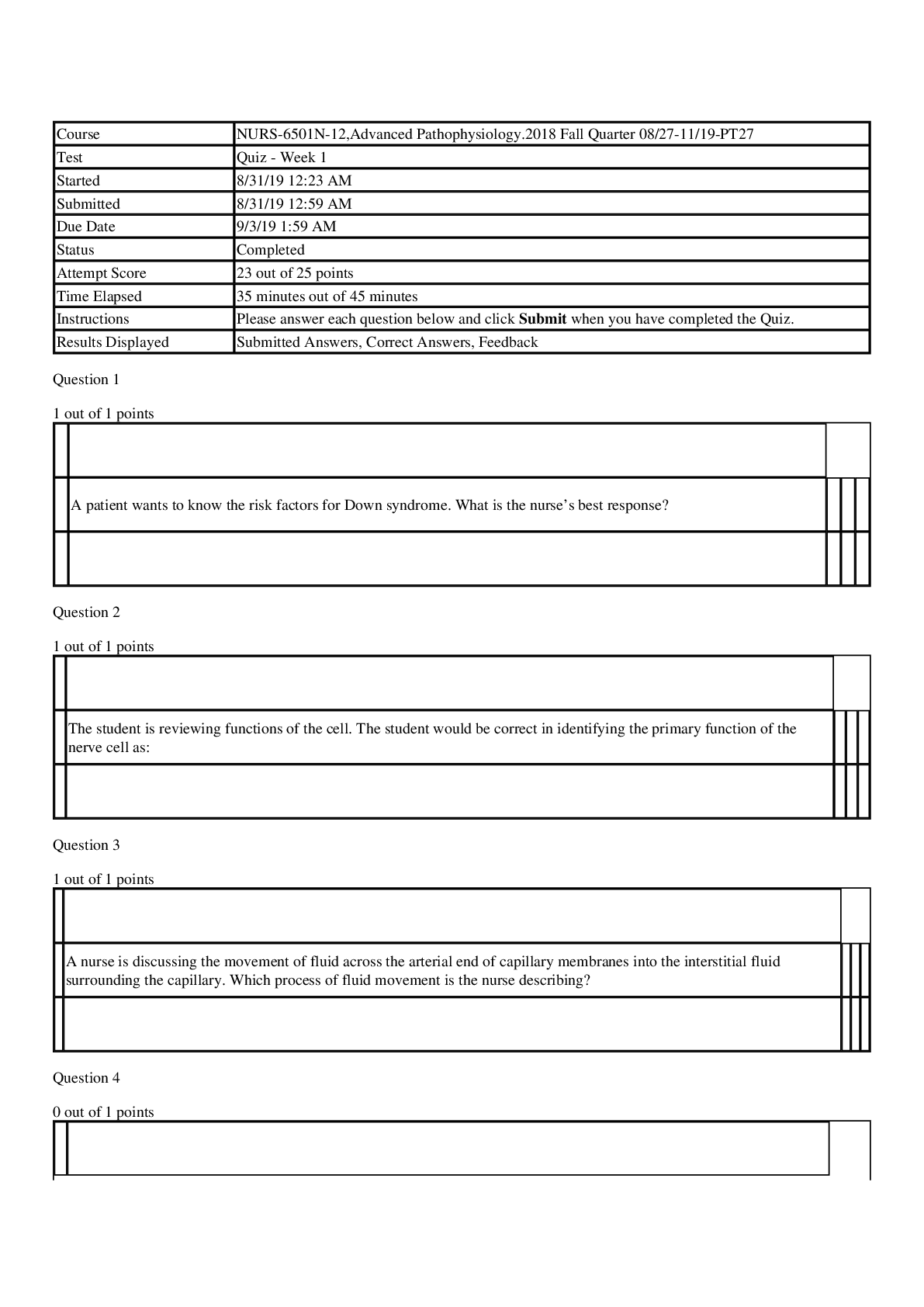
Reviews( 0 )
Document information
Connected school, study & course
About the document
Uploaded On
May 08, 2020
Number of pages
10
Written in
Additional information
This document has been written for:
Uploaded
May 08, 2020
Downloads
0
Views
95

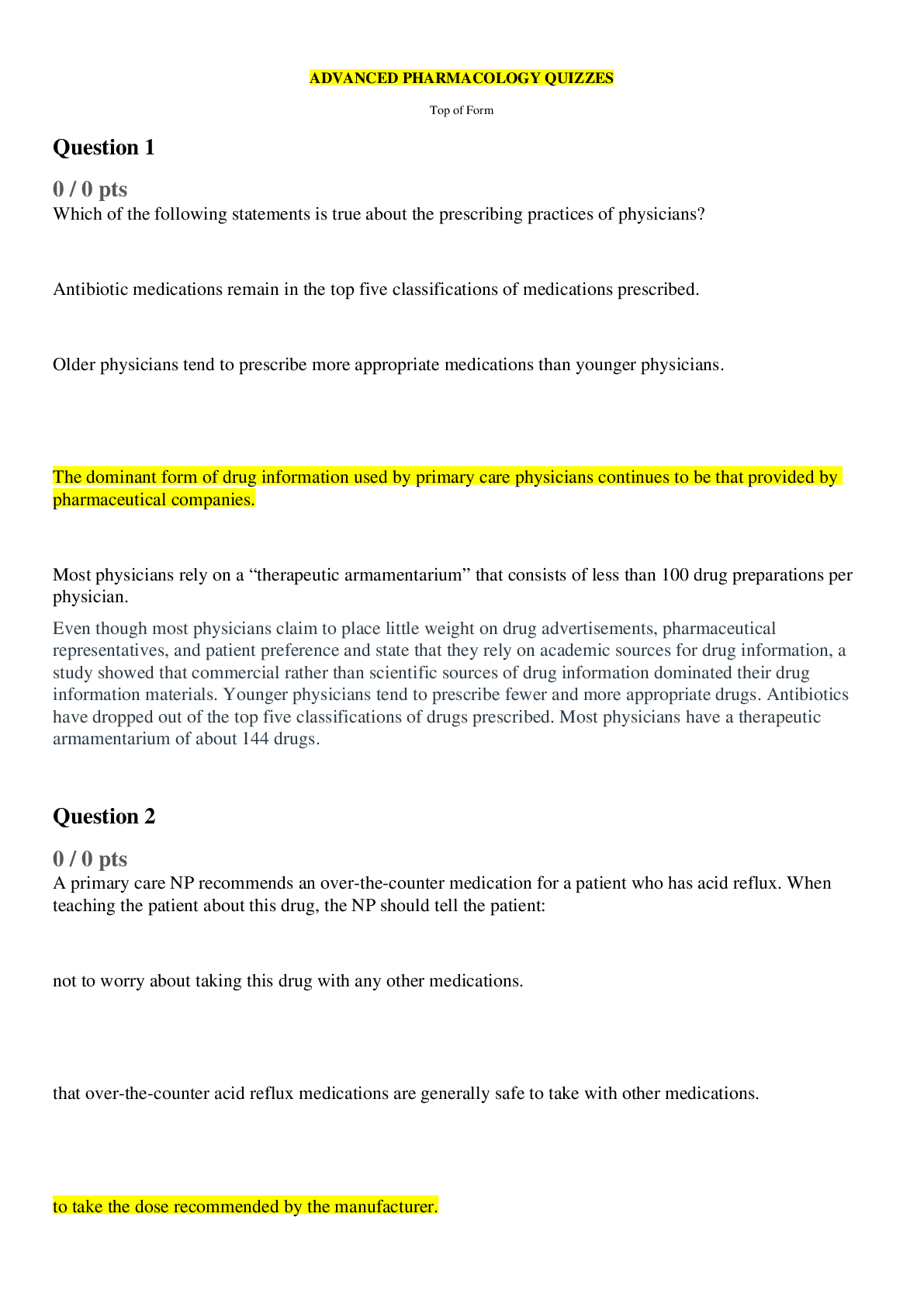
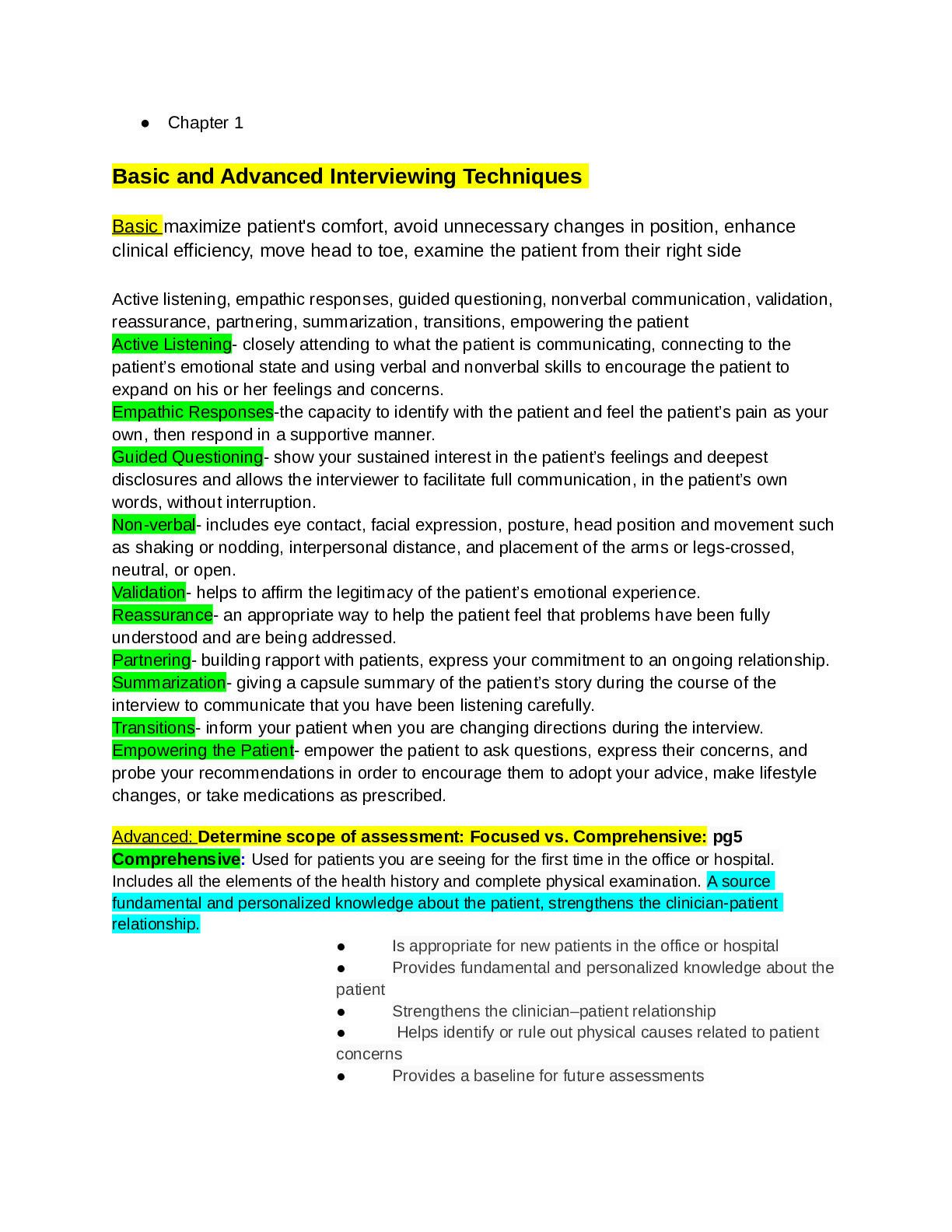
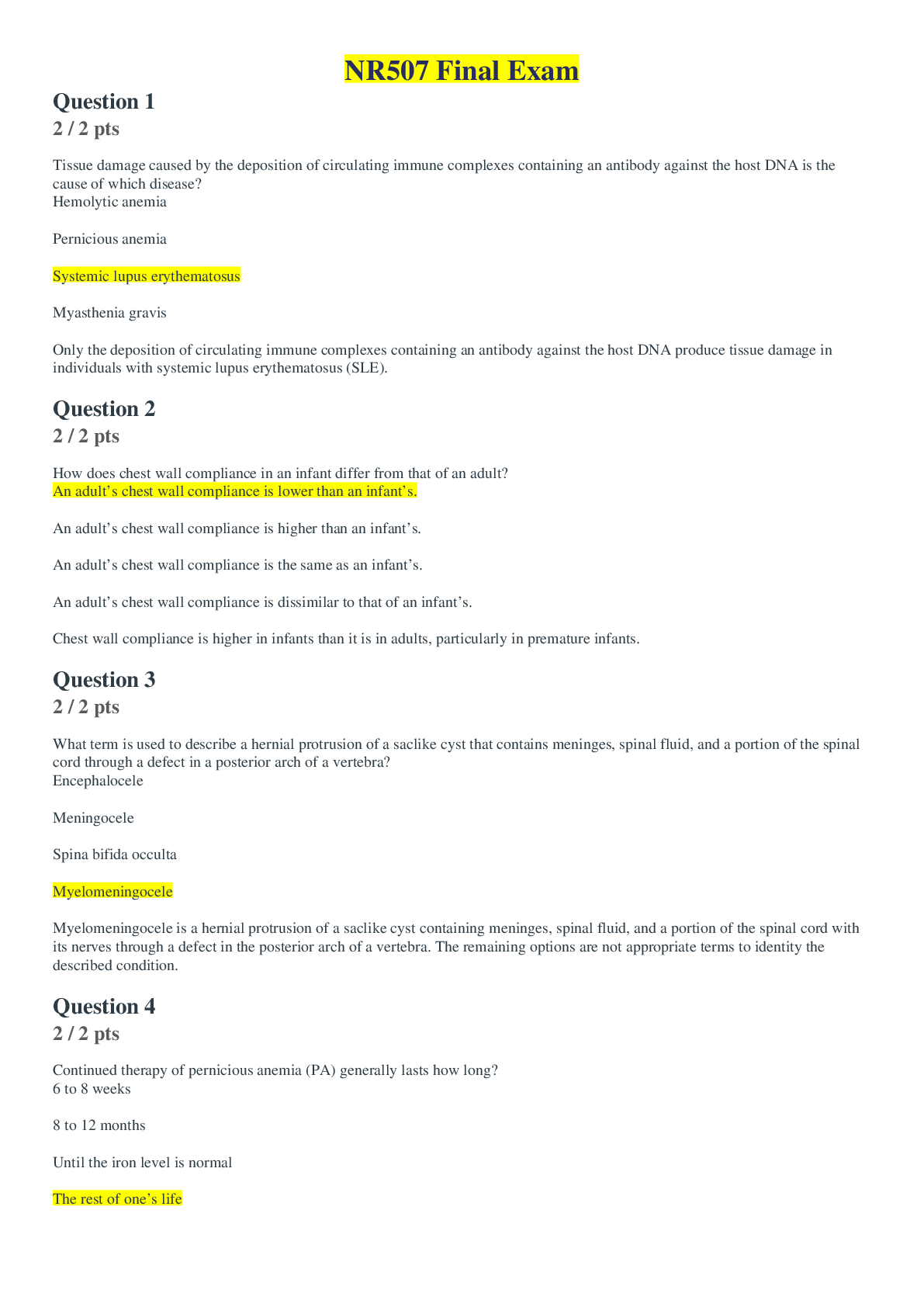
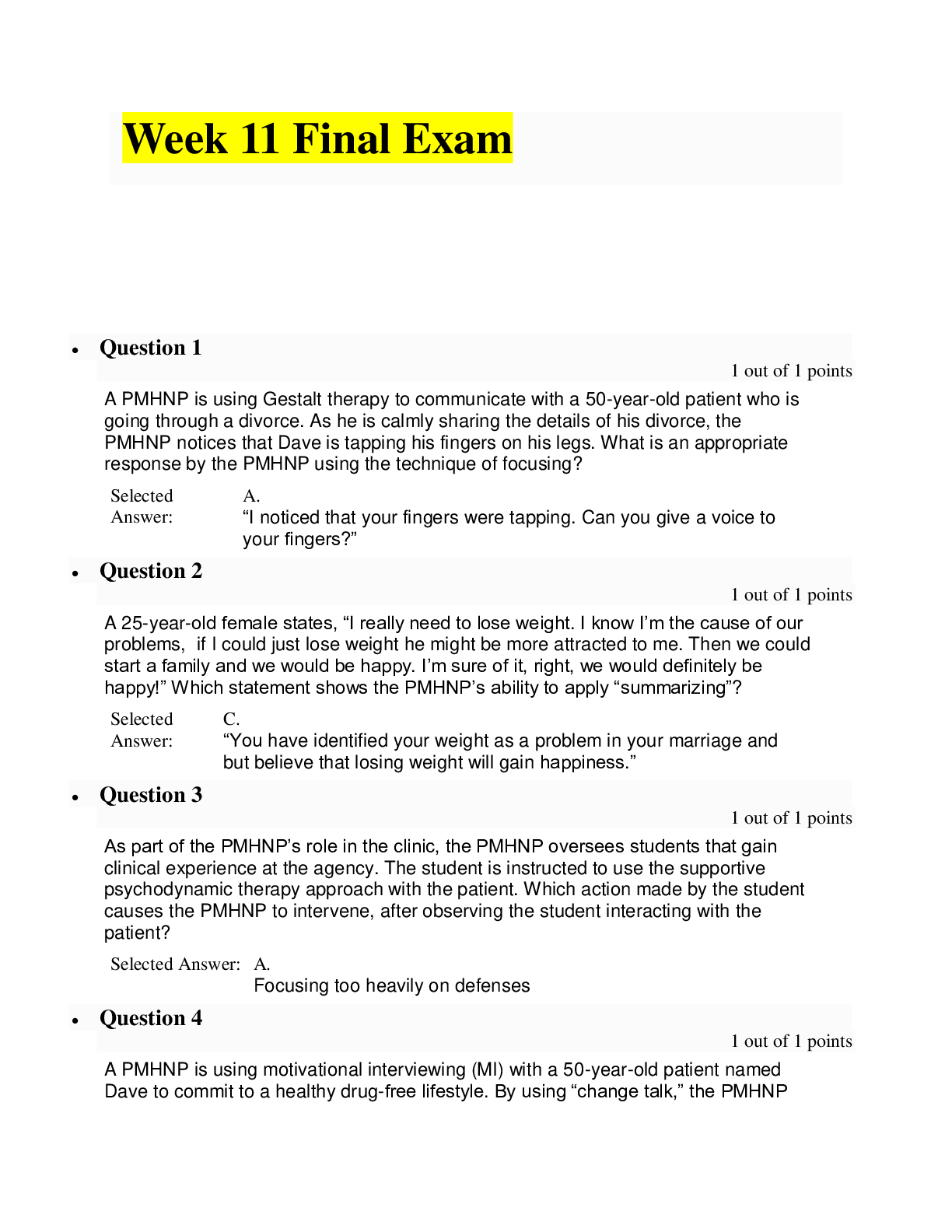
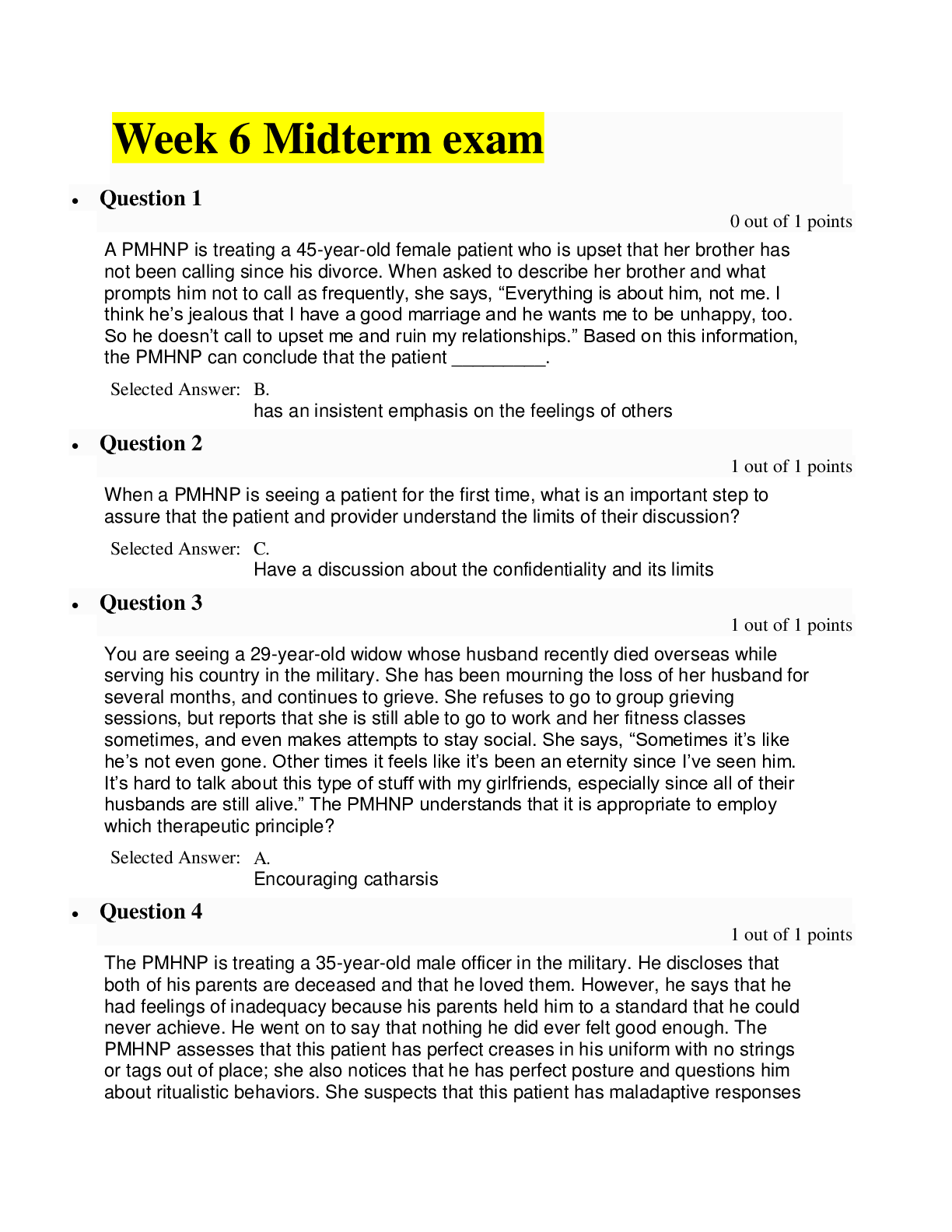
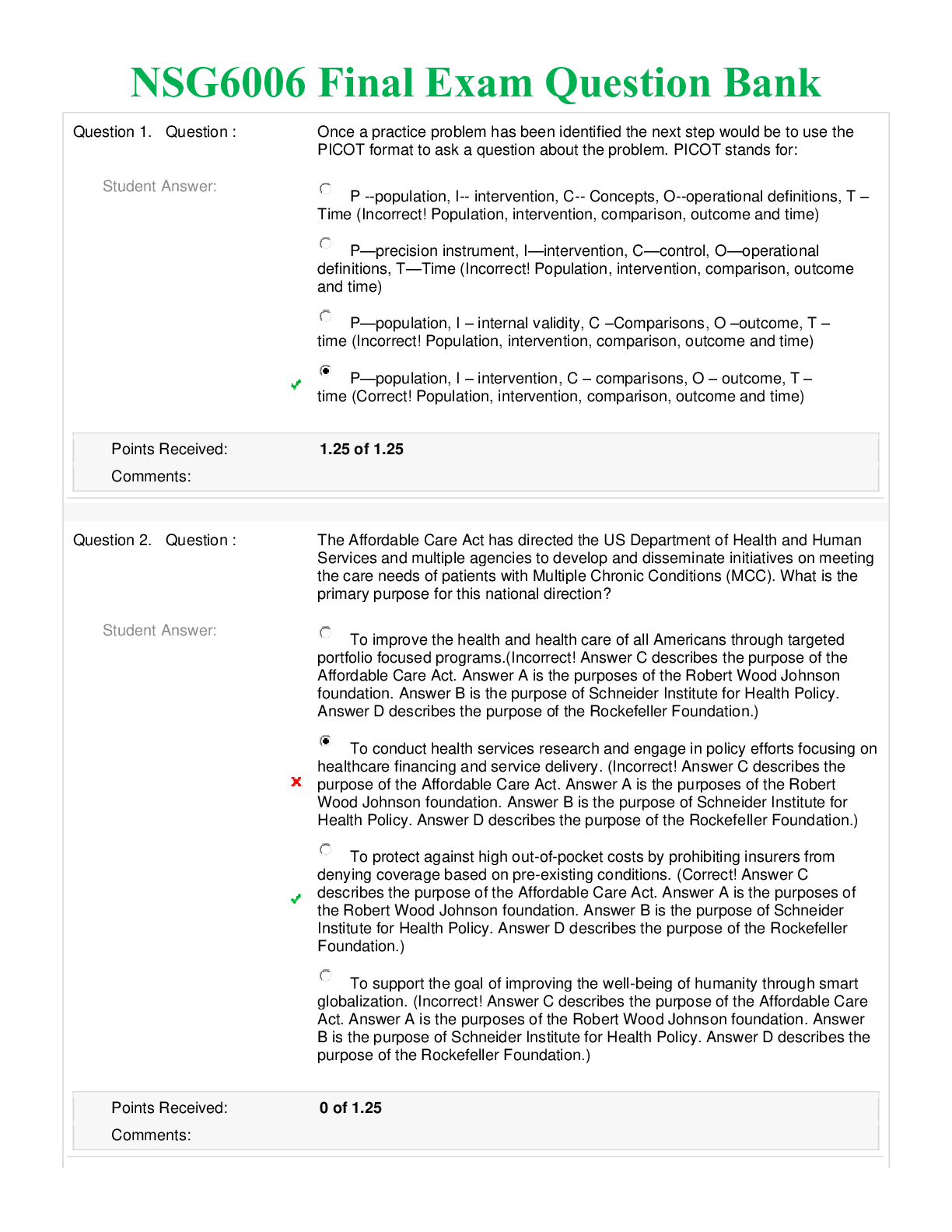
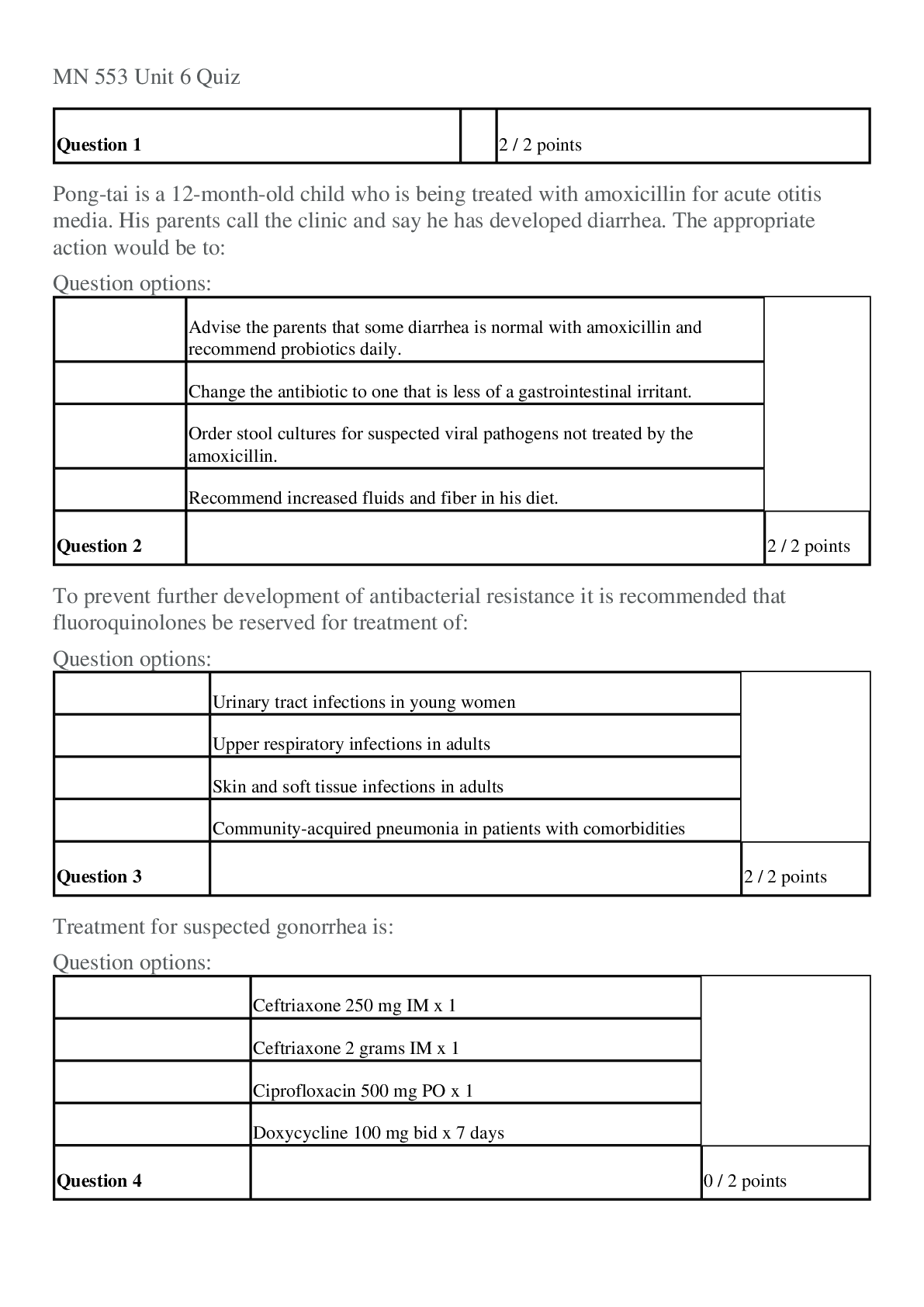
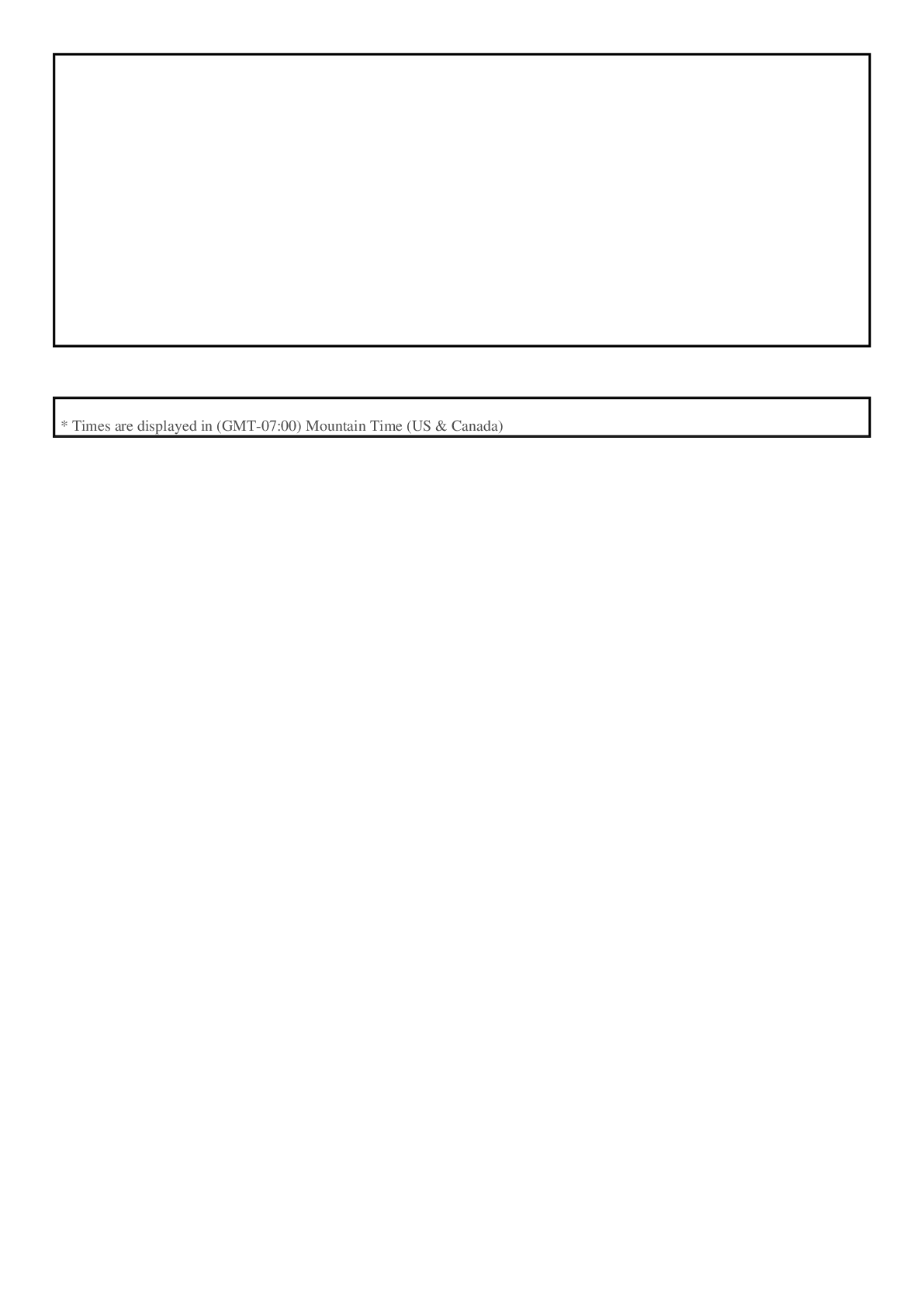

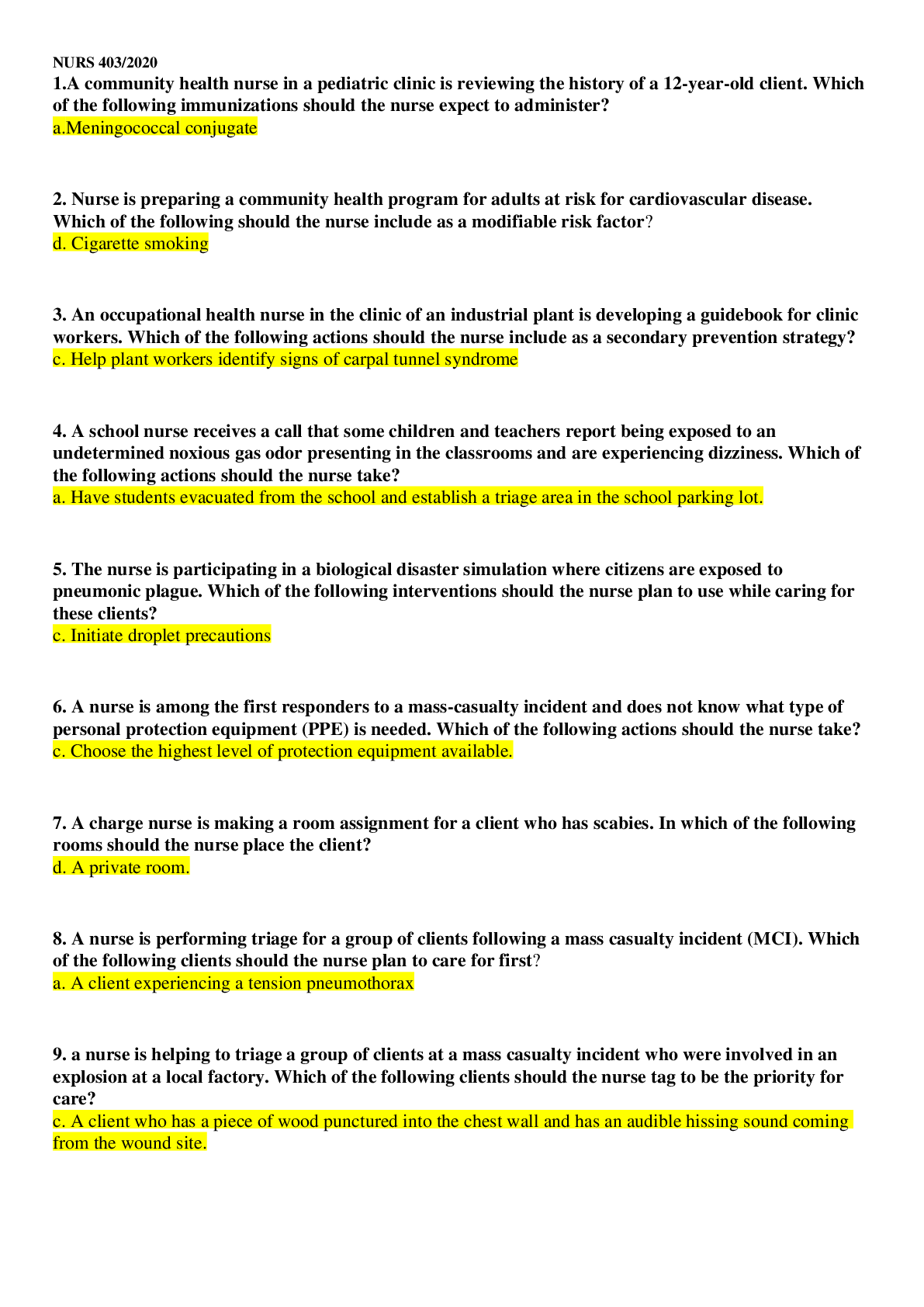
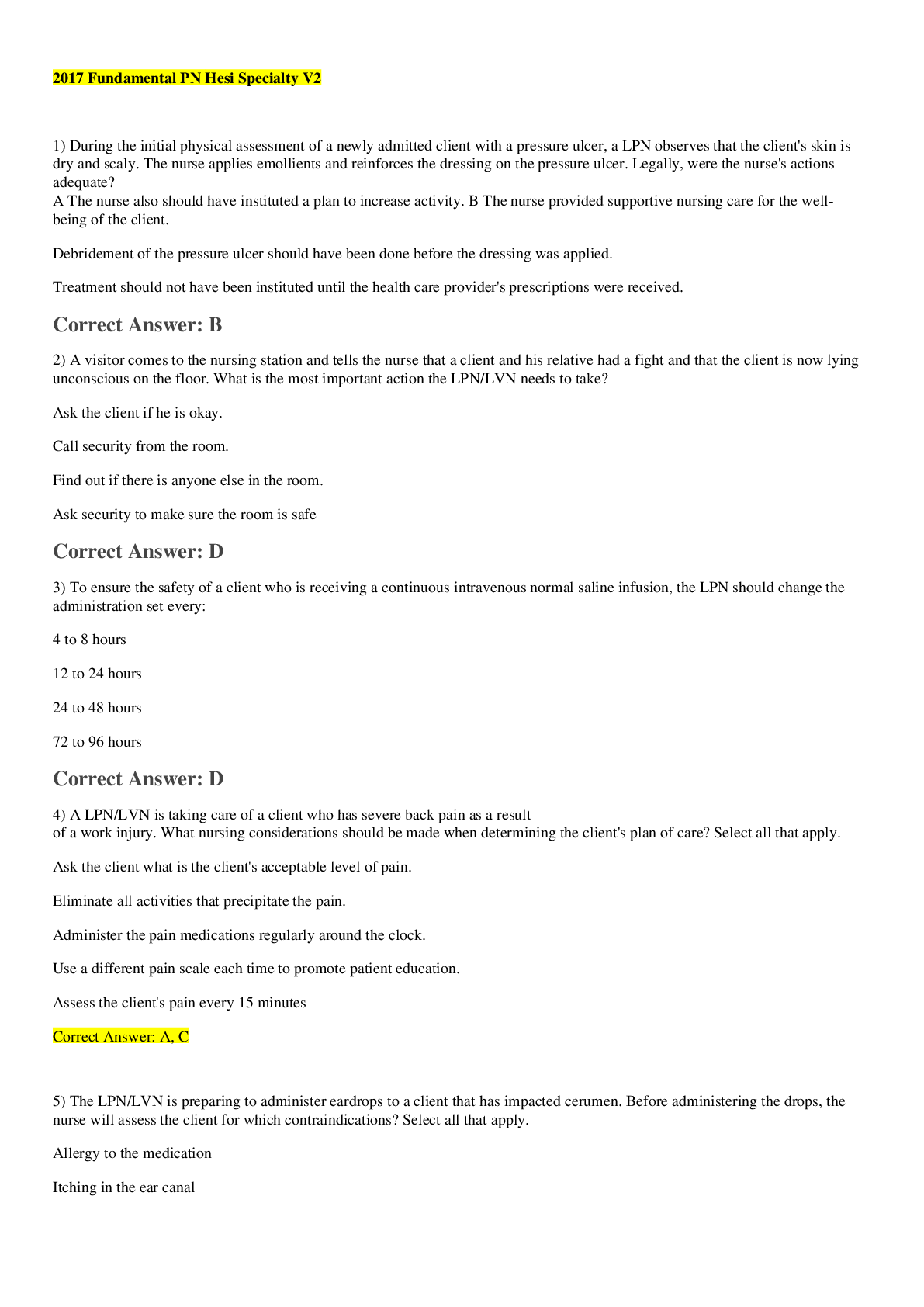
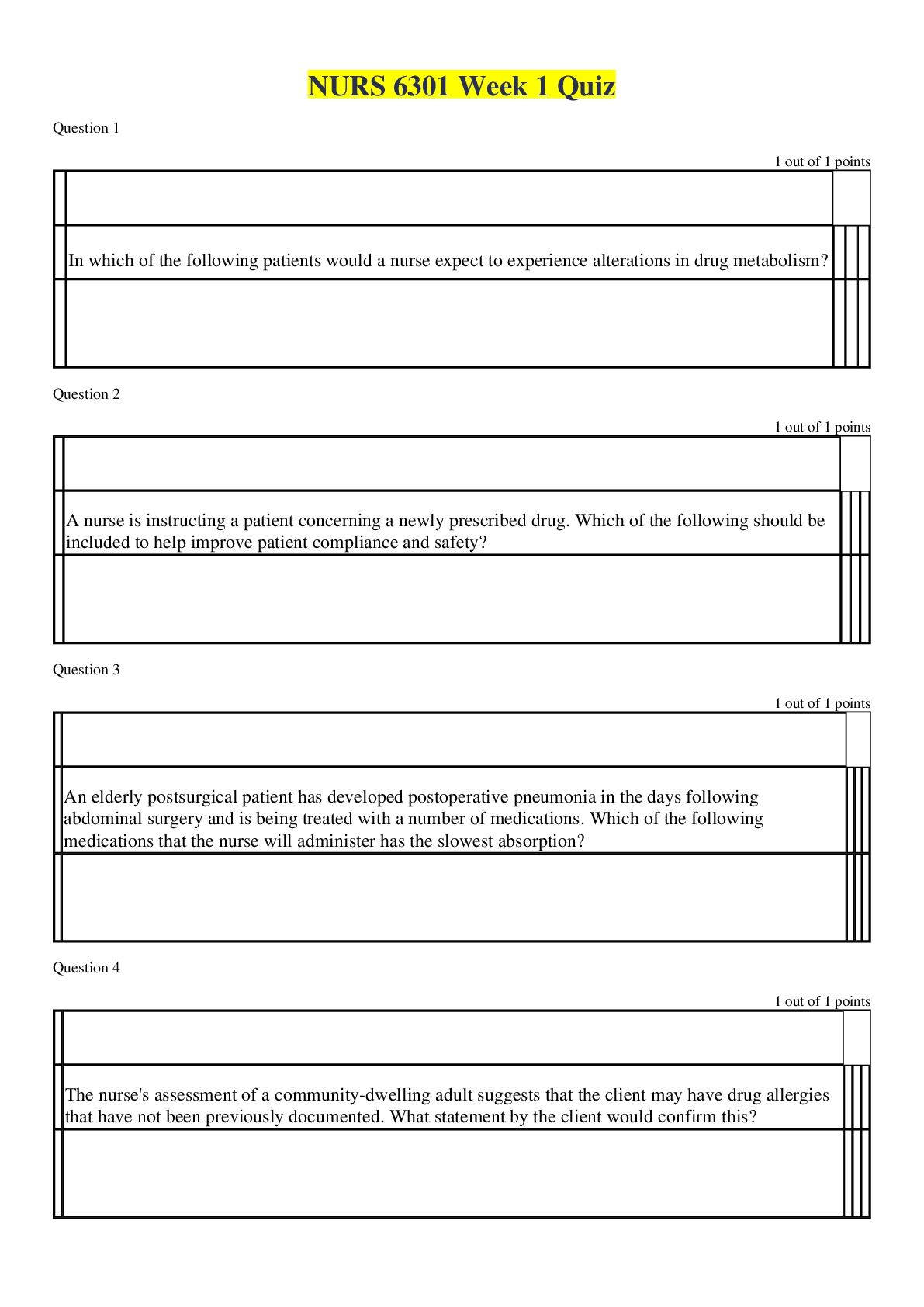
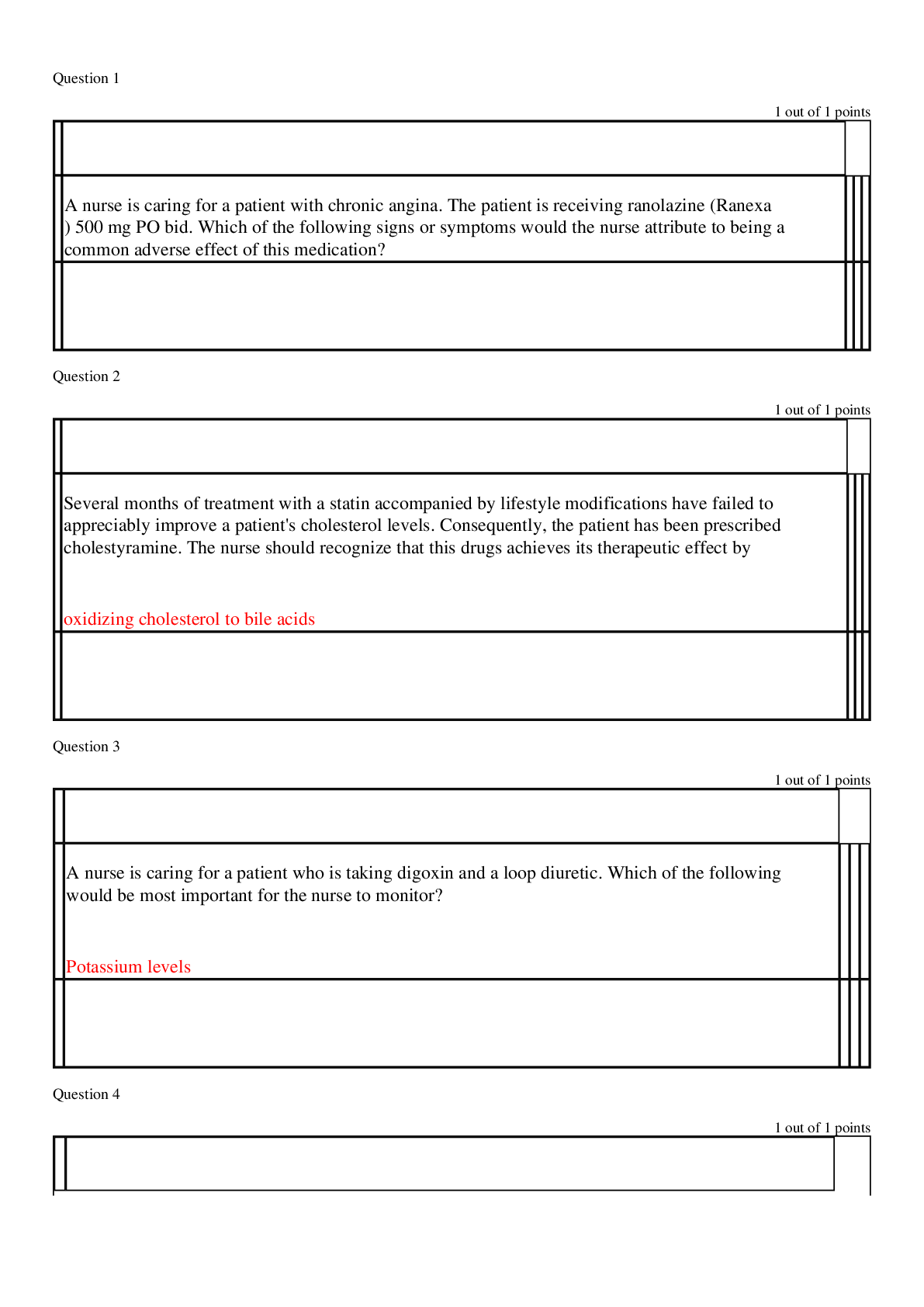
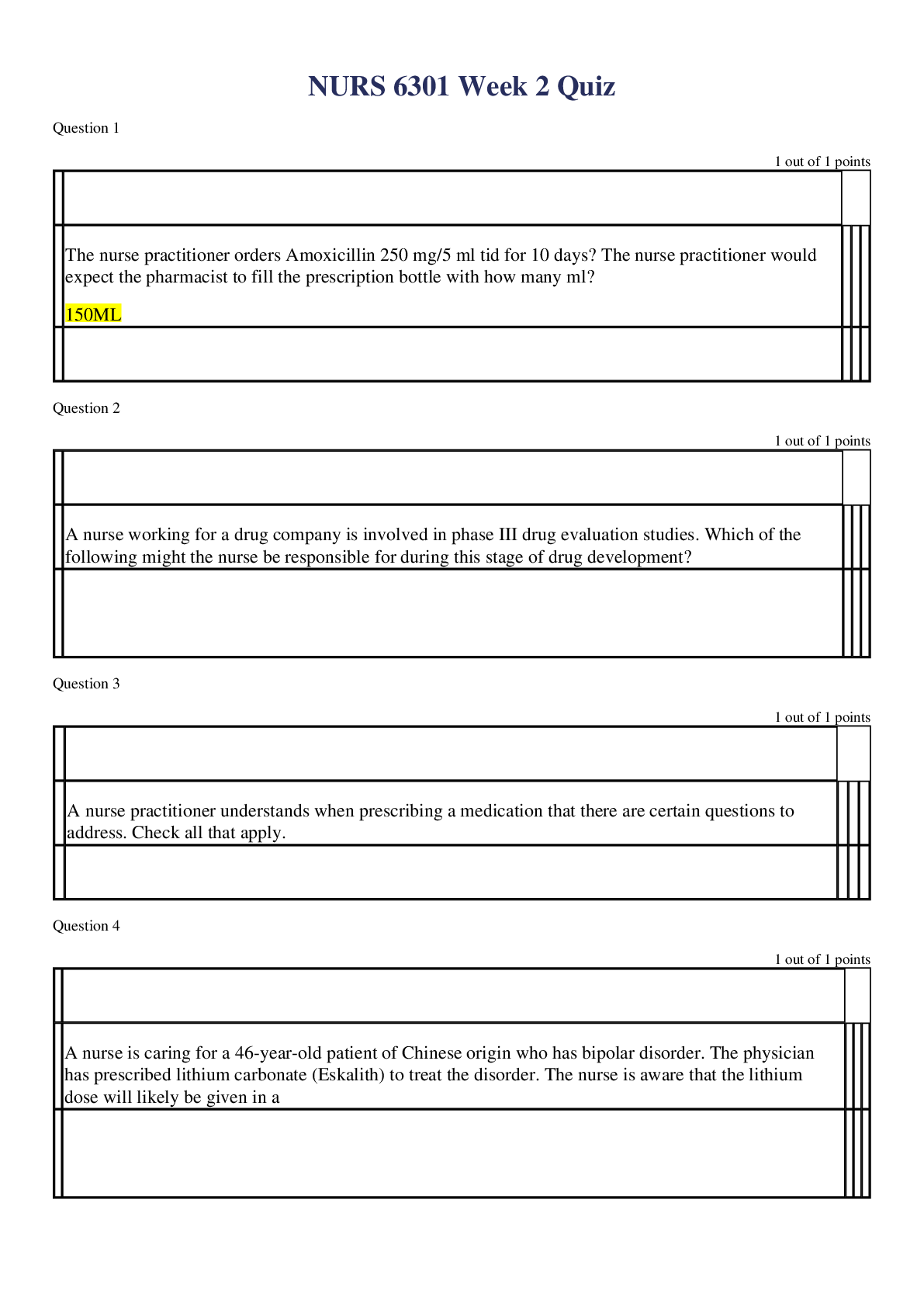
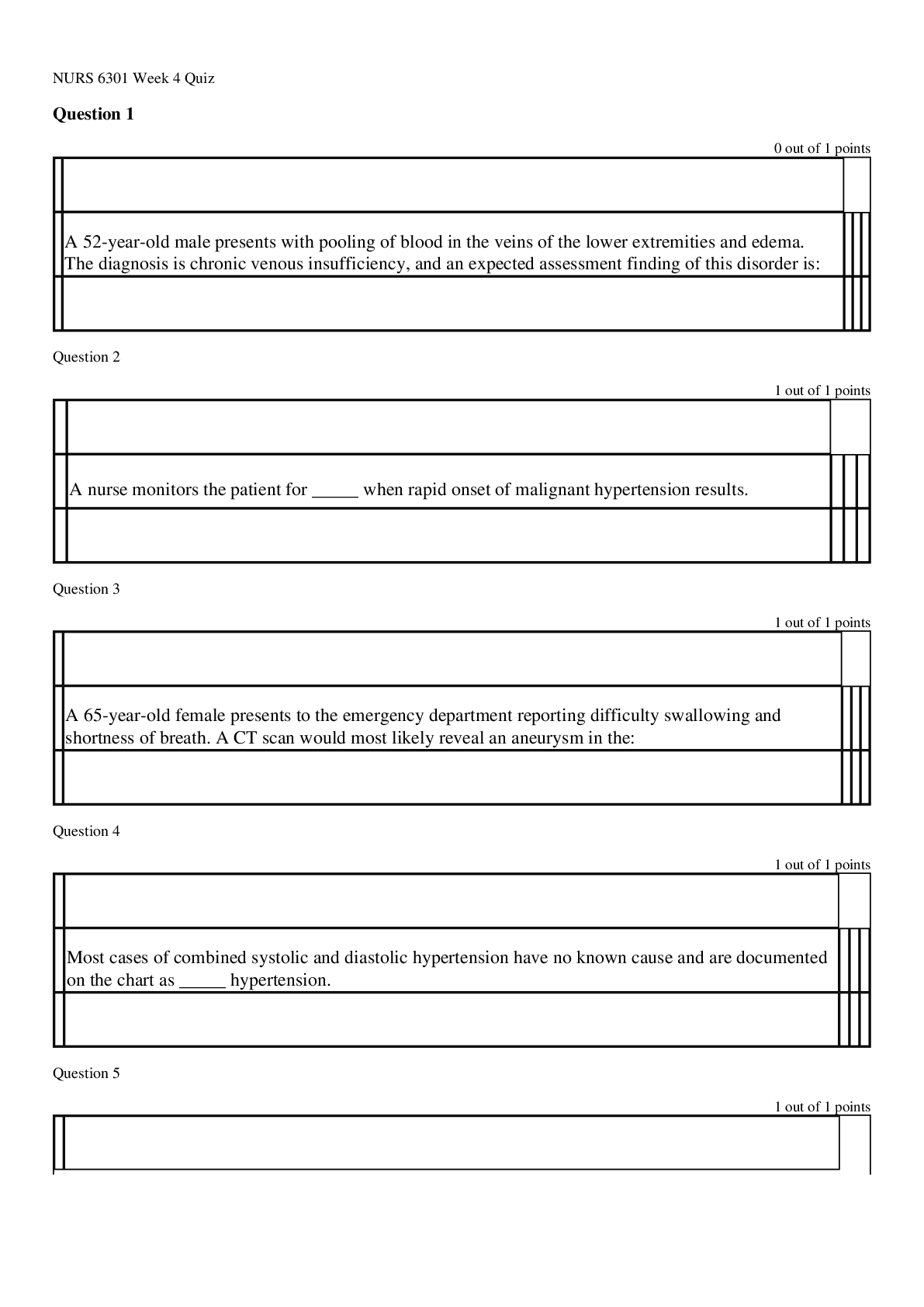

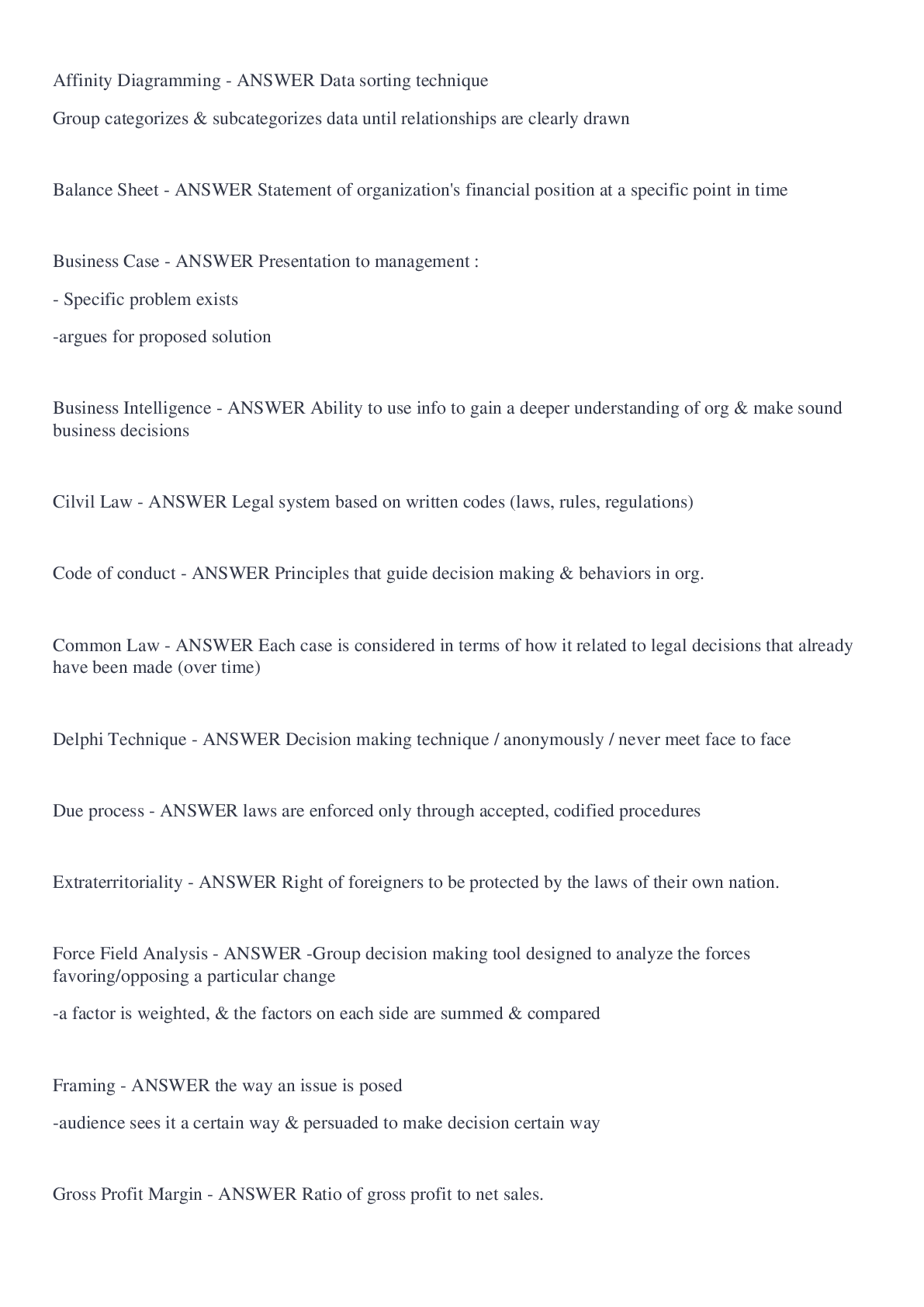
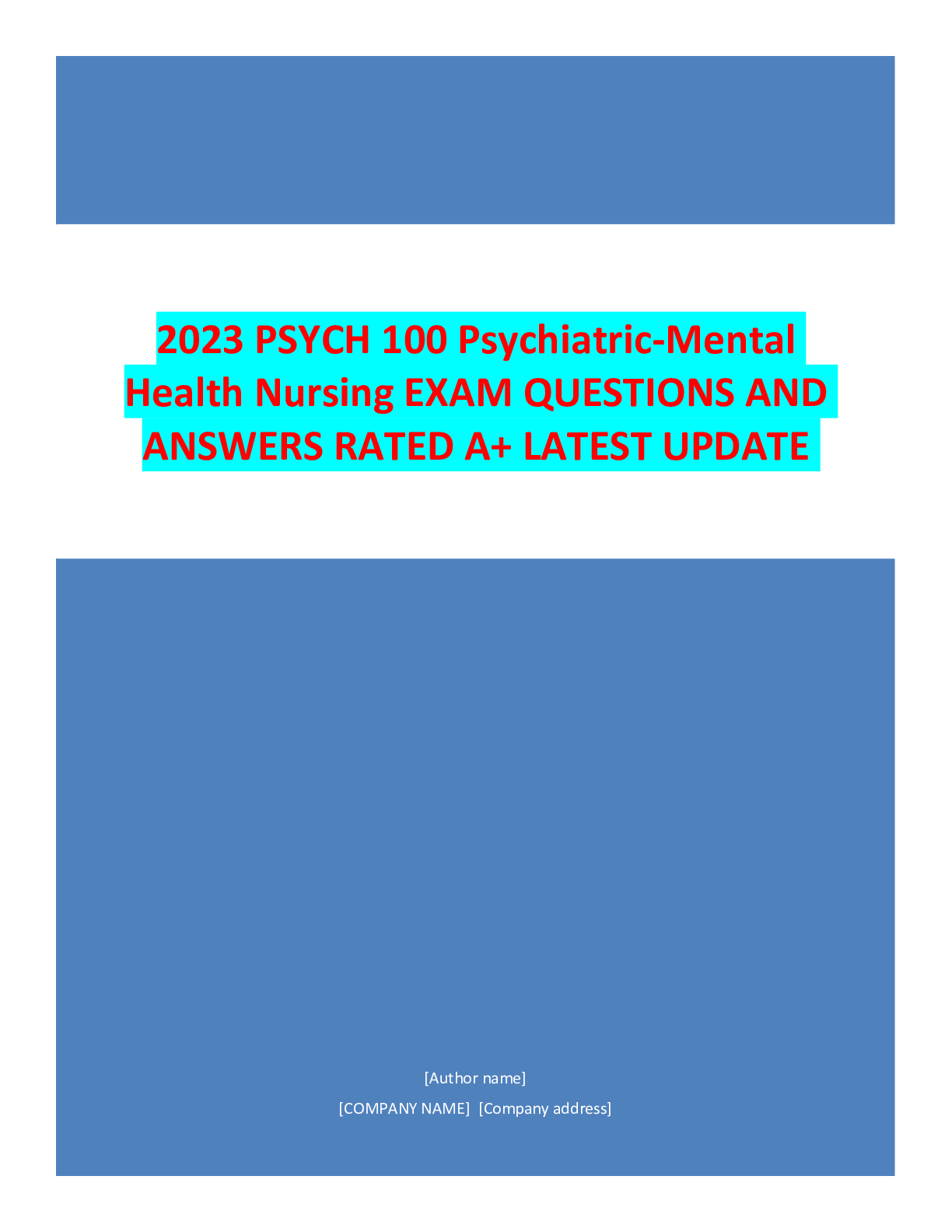
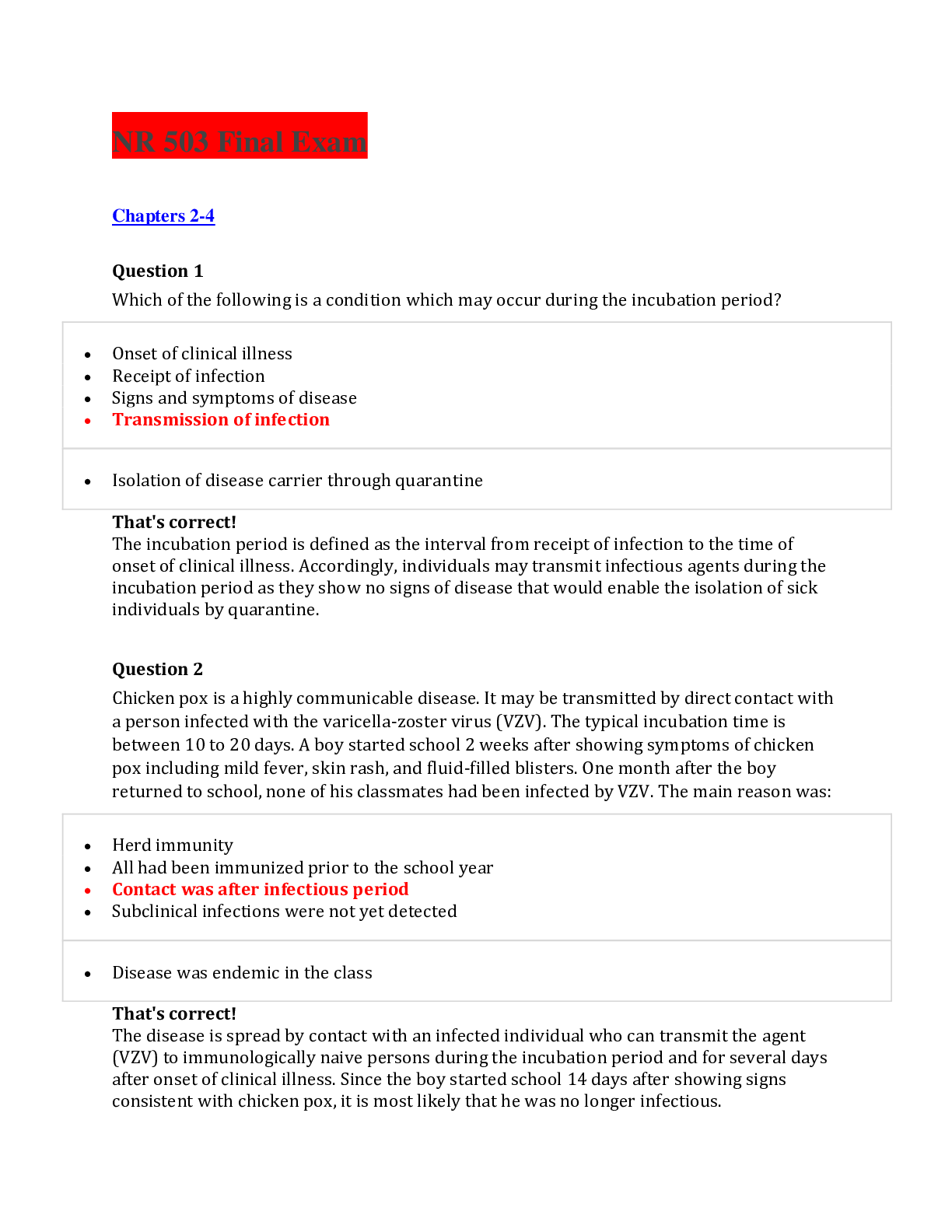
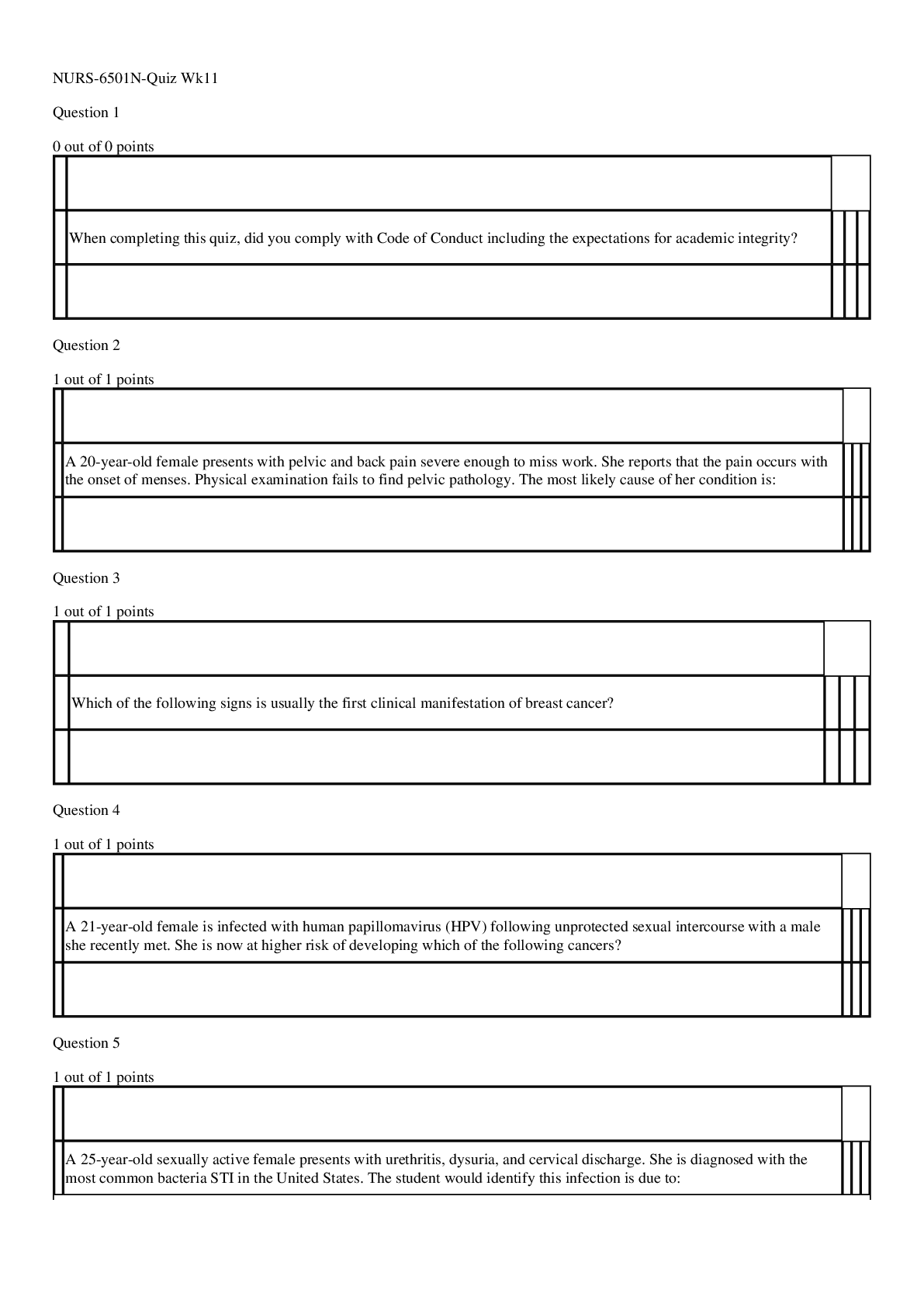
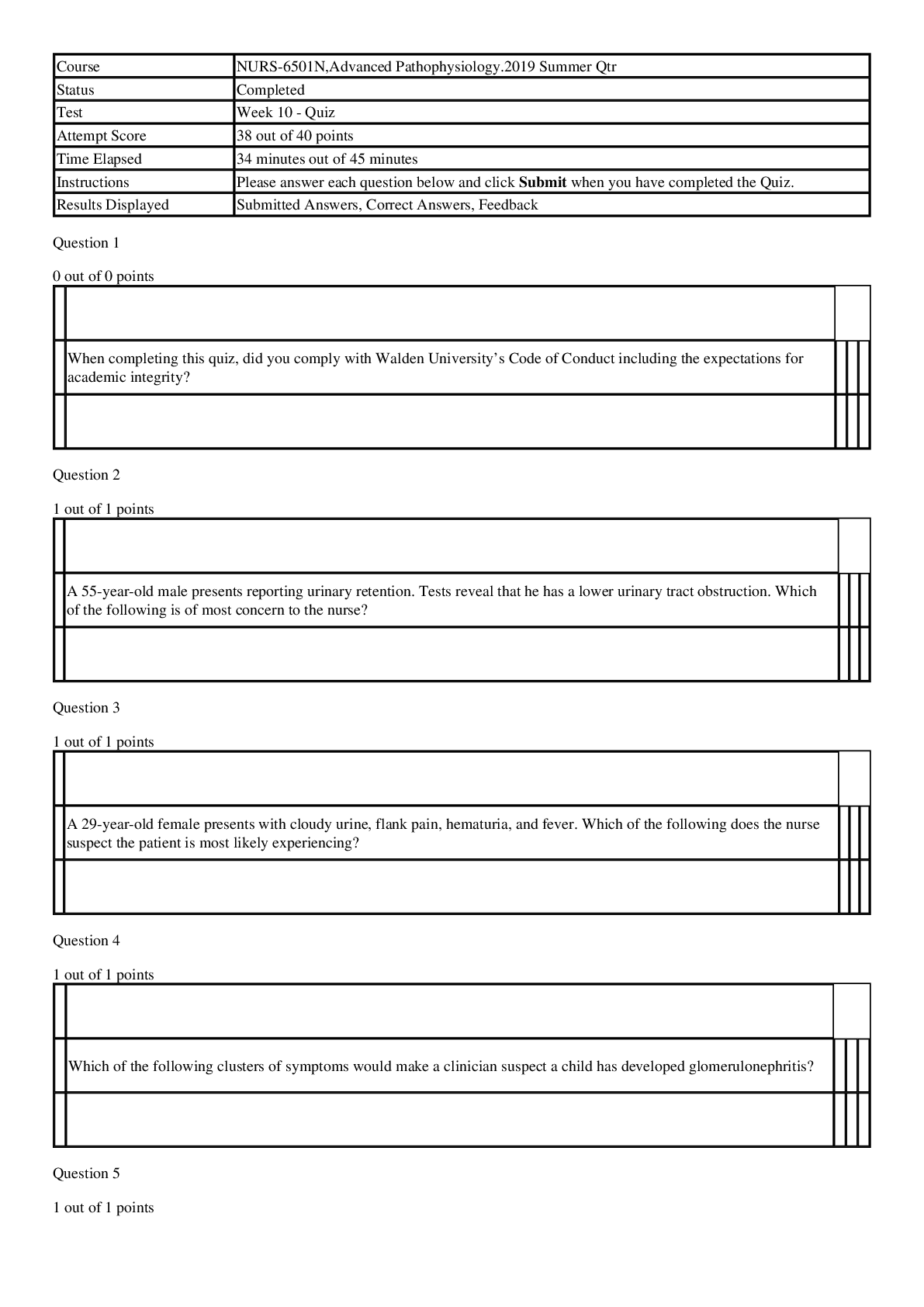
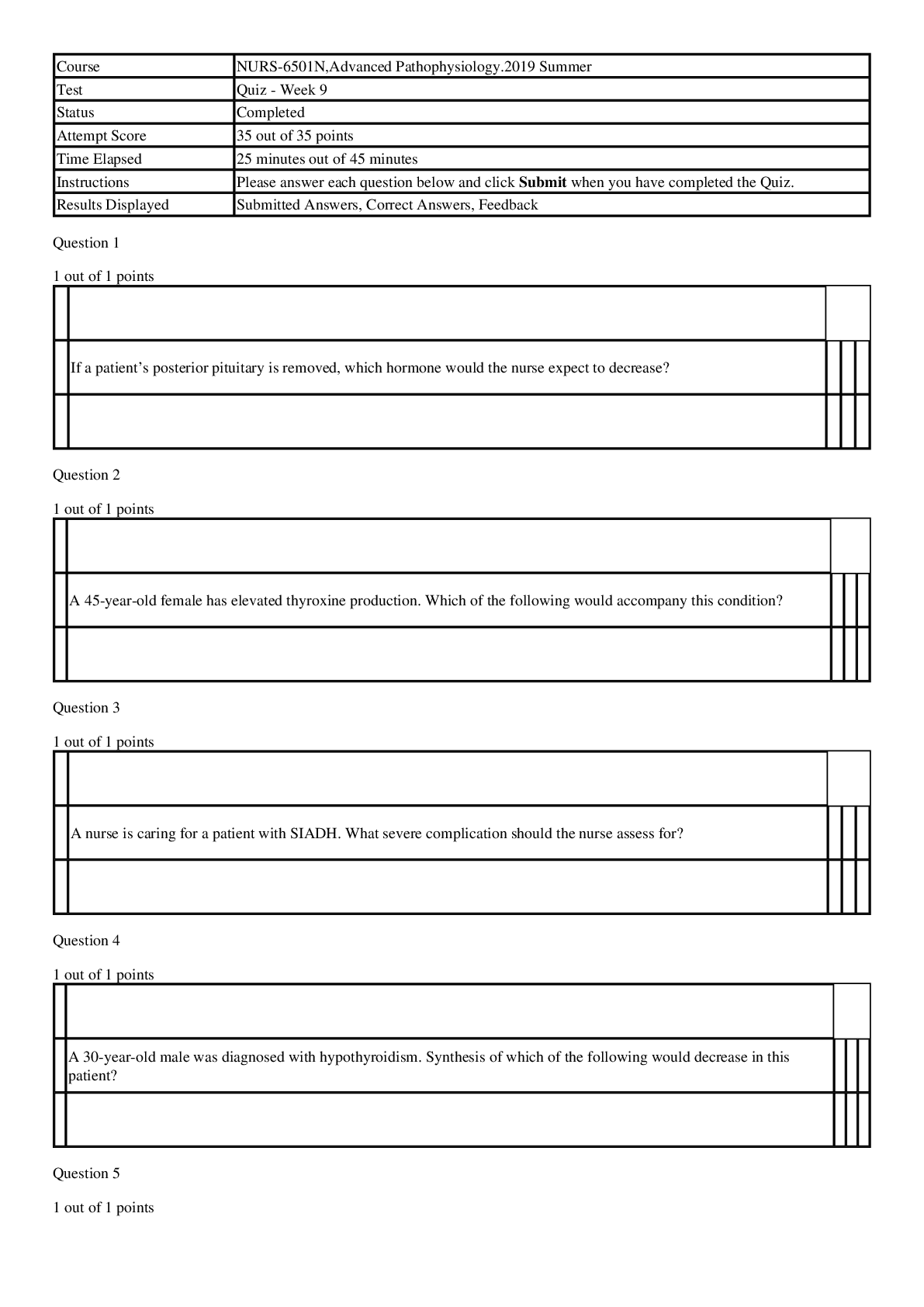
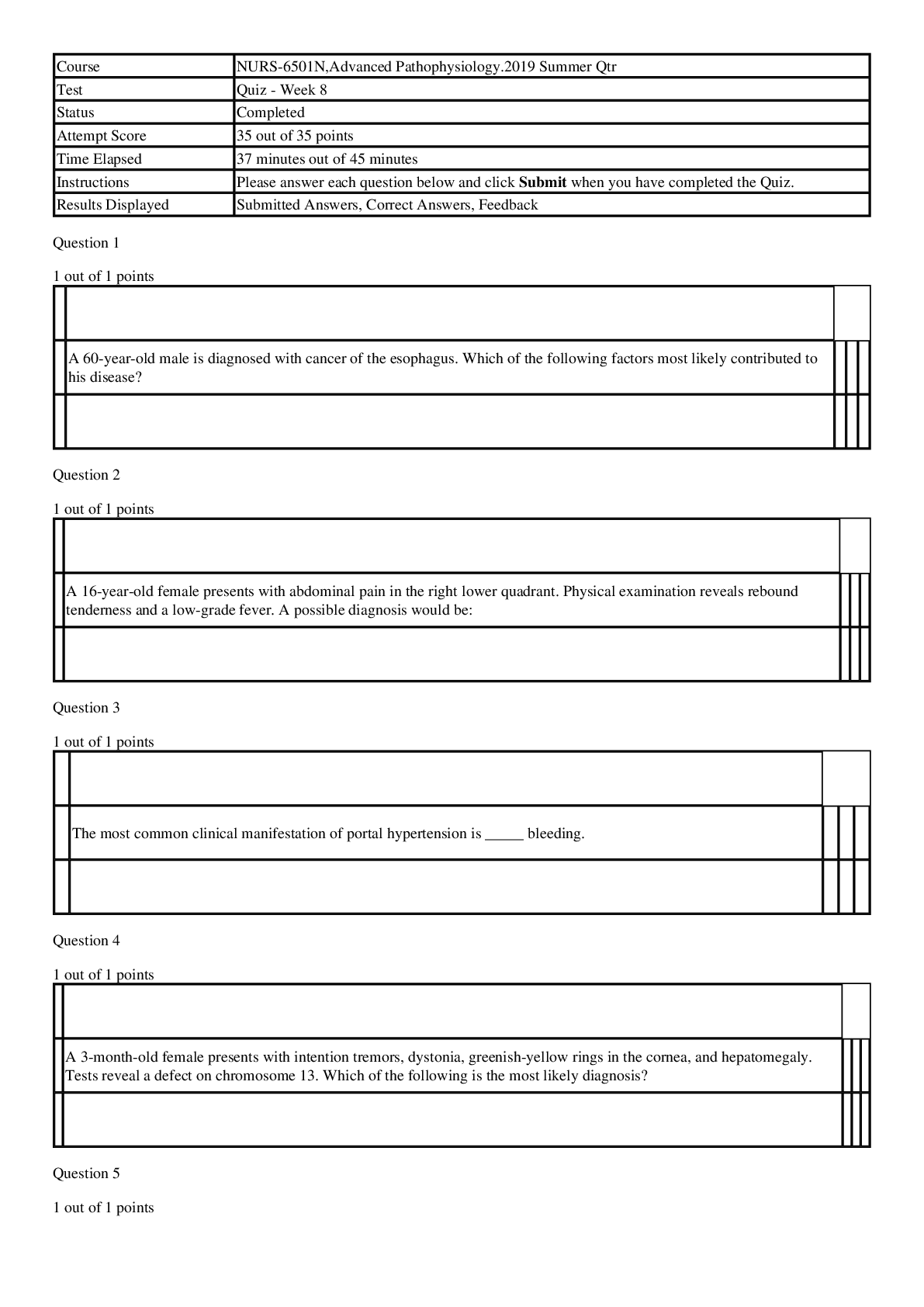
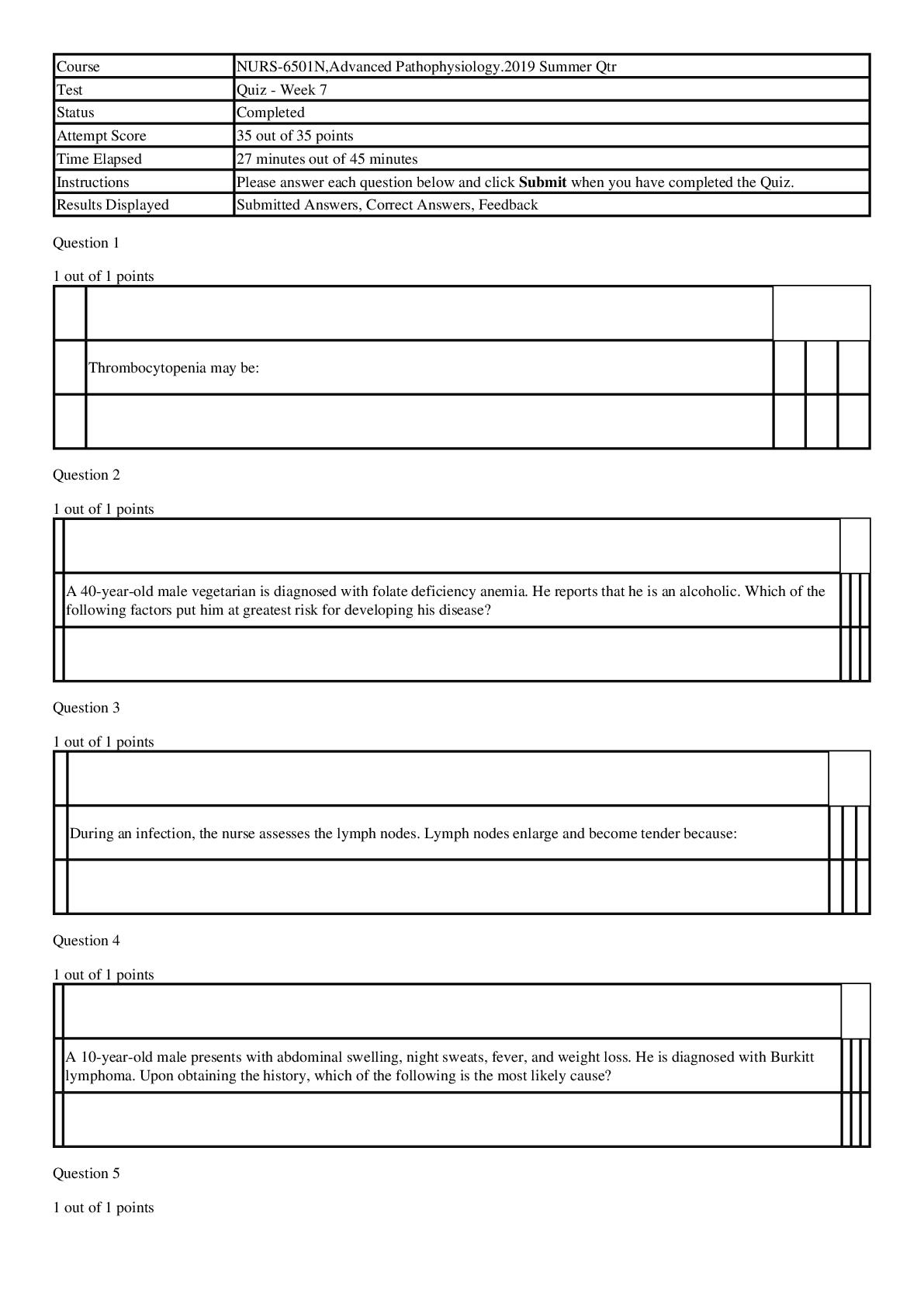
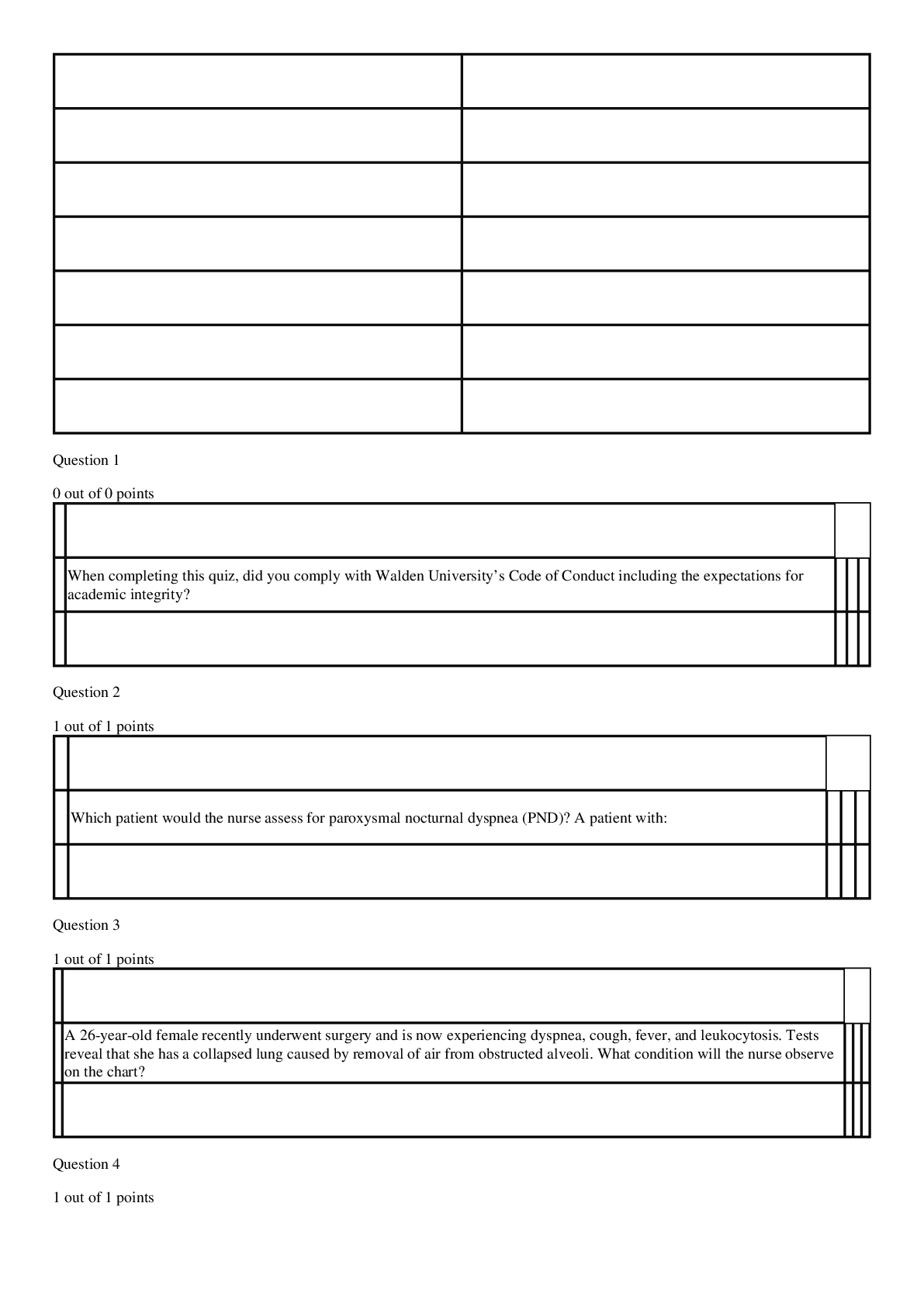
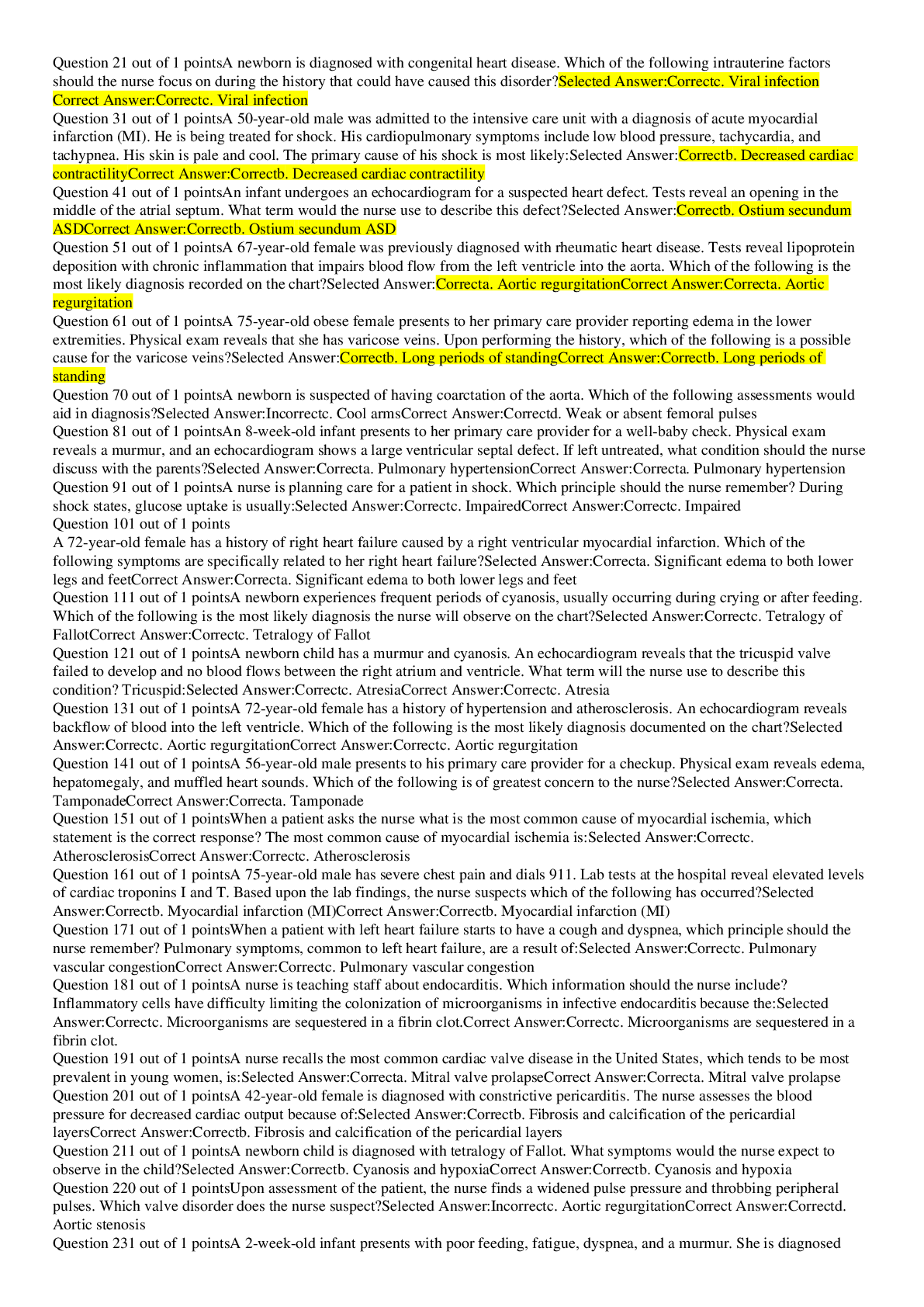


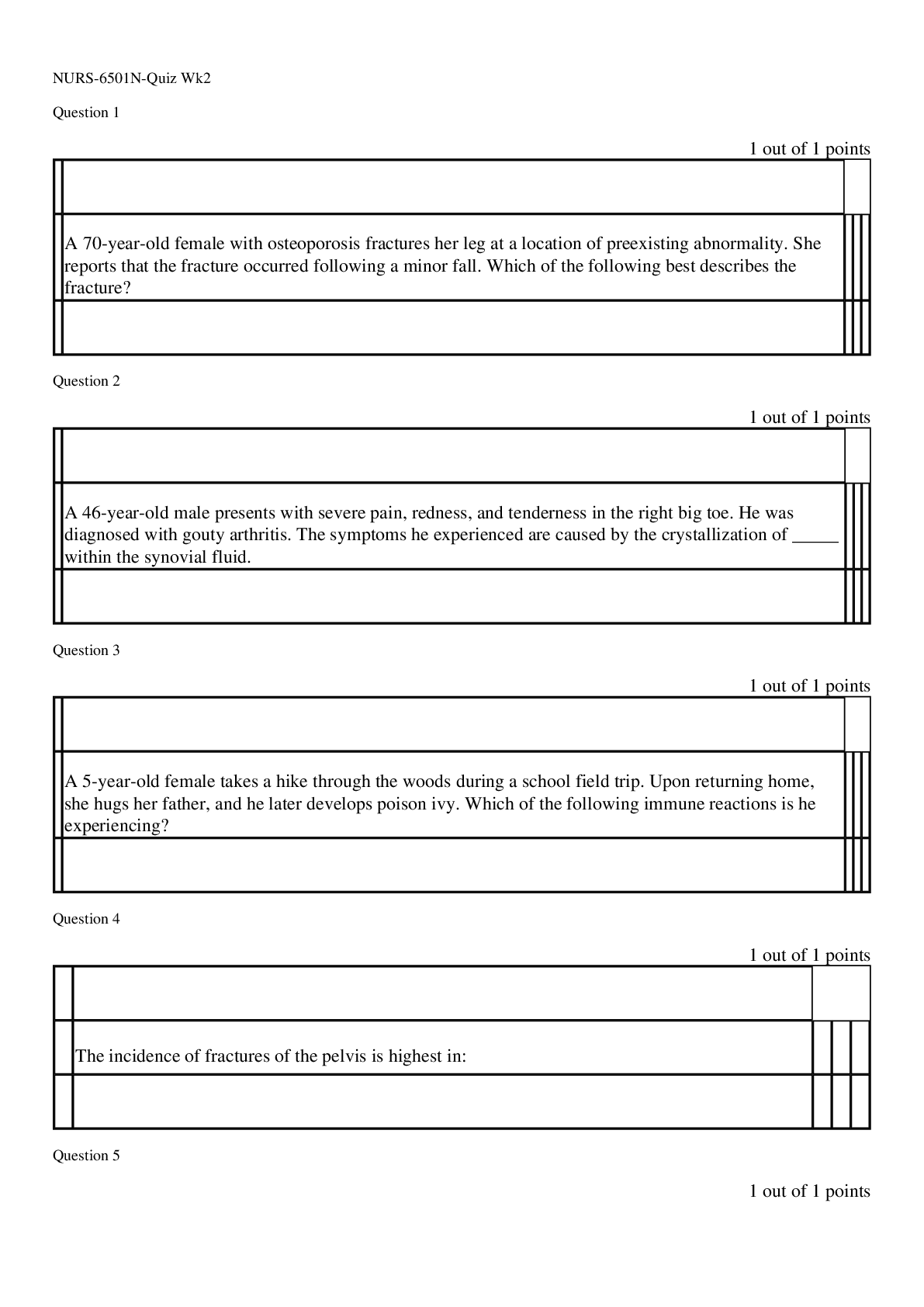
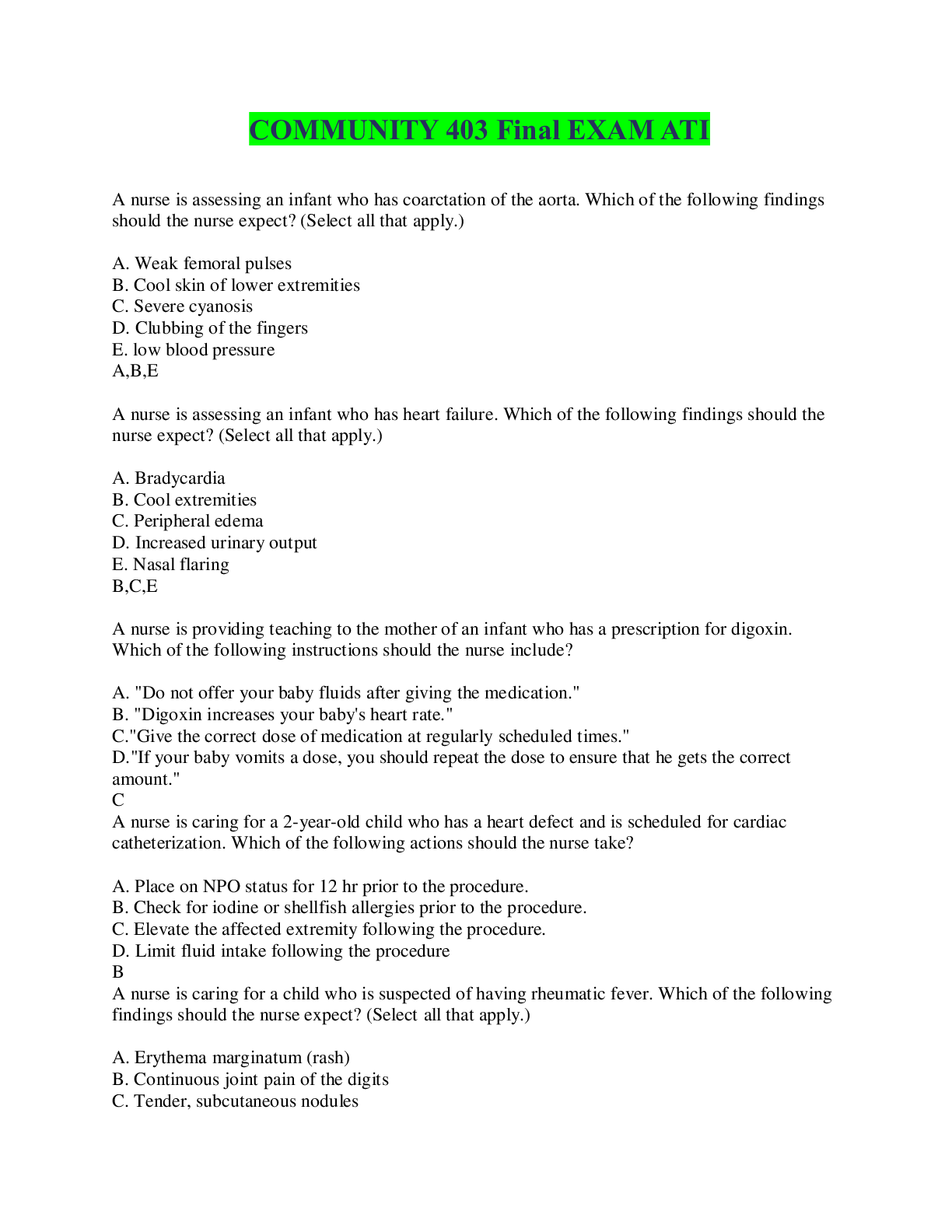
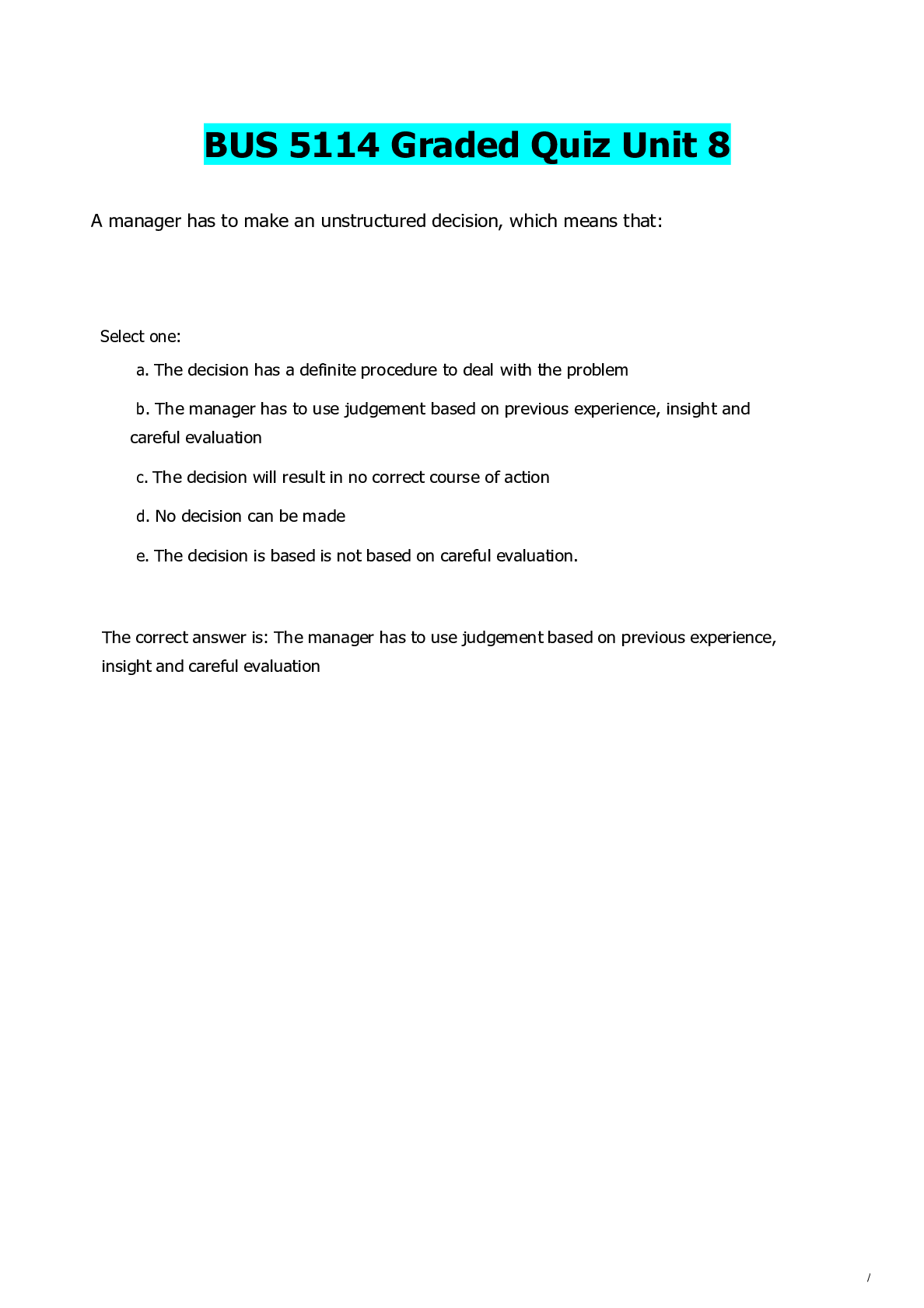
.png)

